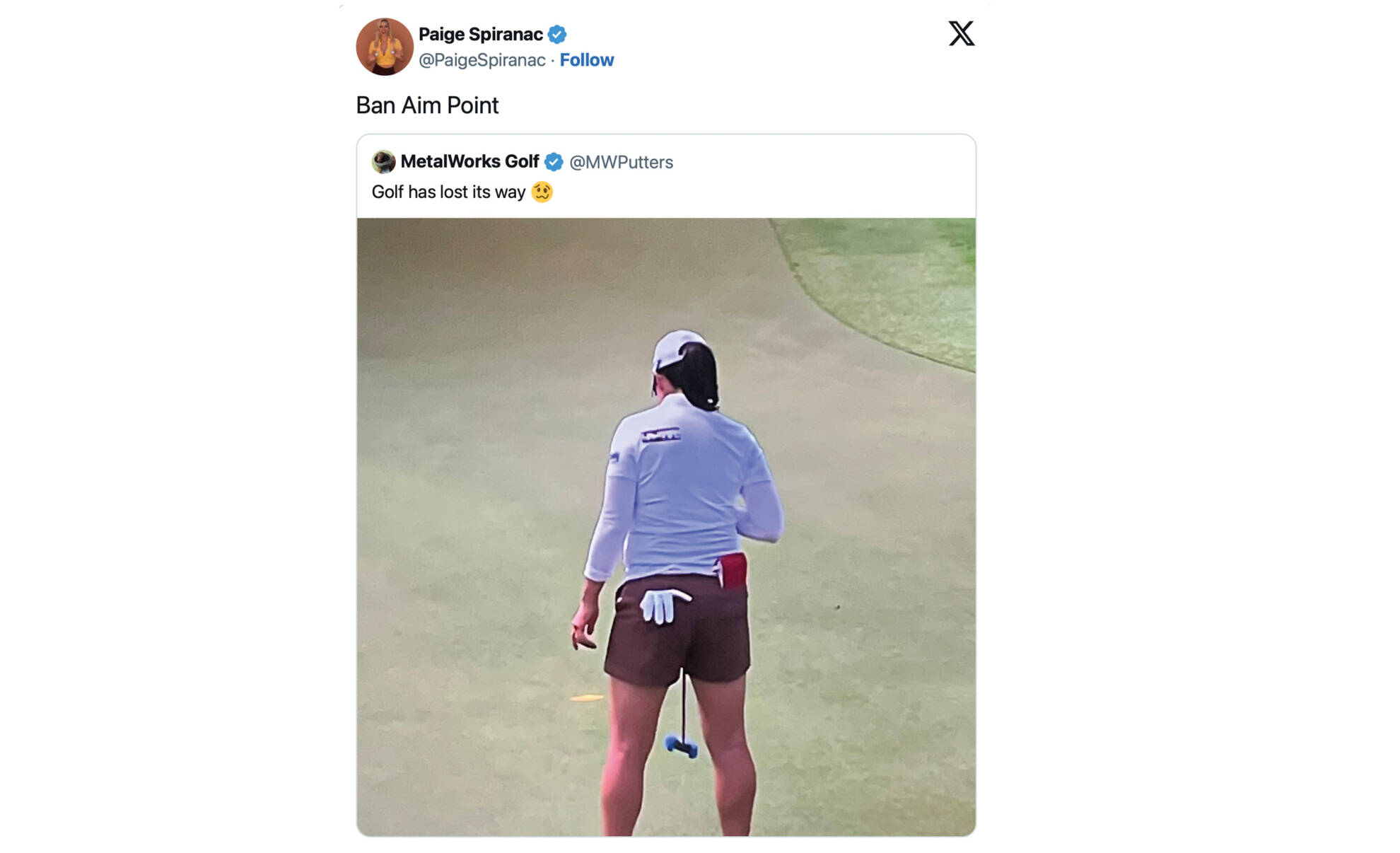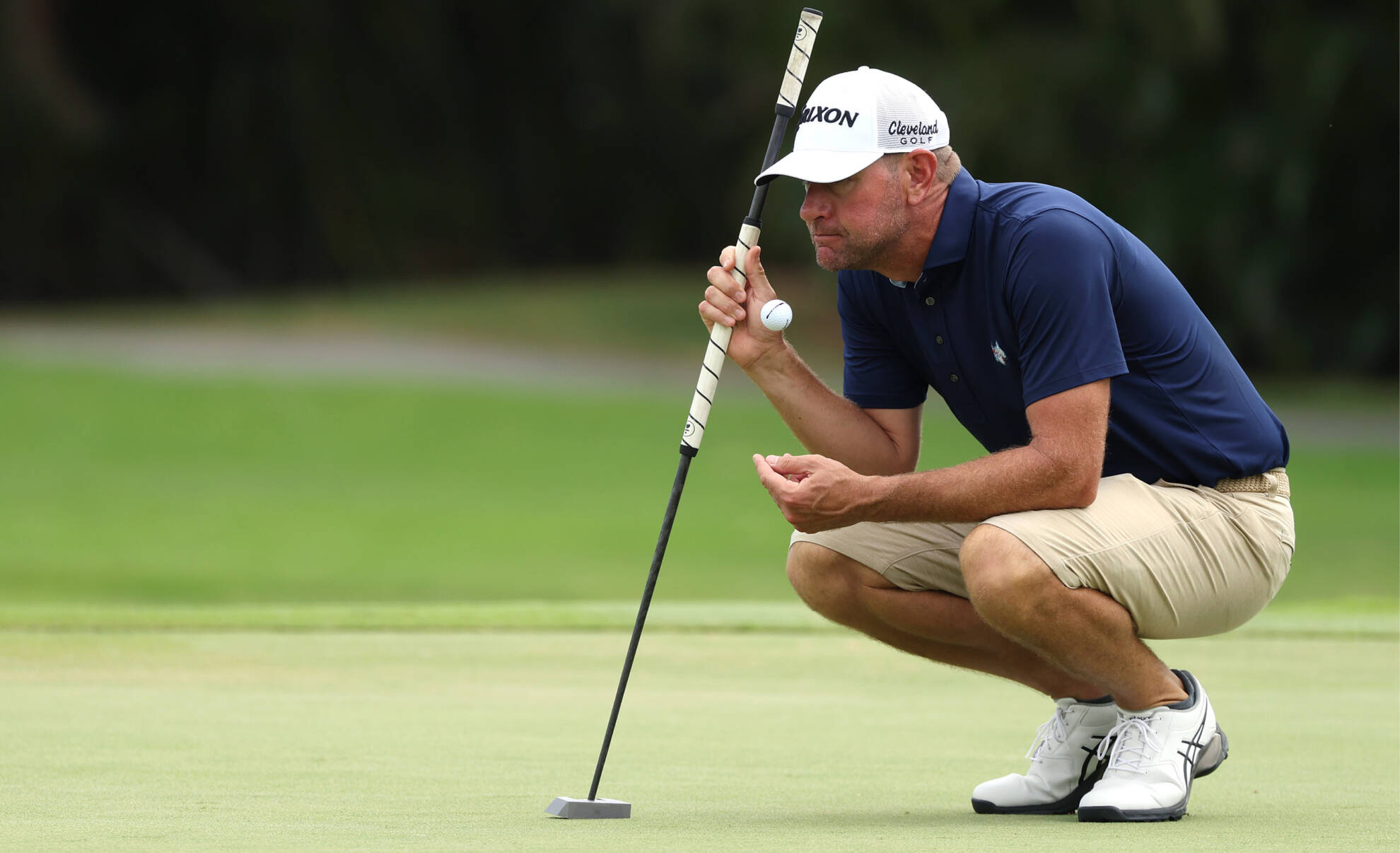The debate over slow play in professional golf has reignited, with social media sensation and former professional golfer Paige Spiranac leading the charge against a controversial green-reading technique. Spiranac has taken to social media to express her dissatisfaction with AimPoint, a method used by players to determine the ideal putting line, arguing that it is negatively impacting the pace of play on professional tours.
Spiranac voiced her concerns after a viral clip from an LPGA Tour event showed a player meticulously using AimPoint on a putt from just a foot away. The sight prompted Spiranac to post a blunt message on X (formerly Twitter), stating: “Ban AimPoint.”

Spiranac Clarifies Her Stance
While she later clarified that she had no issue with AimPoint itself, she stressed that improper use of the technique contributes to slow play. “In all seriousness, there’s nothing wrong with AimPoint. The problem is when it’s not taught correctly, which will slow down pace,” she elaborated. “Also, a player who is slow will always be slow with or without it. My issue is when they are so conditioned to use AimPoint that it’s a habit they have to use even on tap-ins. Trampling around the golf hole is not it.”
AimPoint Defends Its Process
The backlash prompted AimPoint Golf’s official X account to step in and defend the method, clarifying that their system does not require players to measure the final part of the putt. “I’d like to make it very clear that AimPoint does not care about the last part of the putt, so if somebody is walking at the end of the putt, they’re not doing the AimPoint process correctly,” the account stated.
Interestingly, AimPoint Golf also proposed its own solution to slow play: adopting a ‘gimme’ rule for putts inside two feet. “27% of all putts on PGA Tour are 2 feet or shorter with a make % of 99.8%. If you don’t want people walking near the cup then don’t make players putt these out. That’ll speed up play too,” the company suggested.
Slow Play Under Scrutiny
The controversy comes amid broader discussions about slow play in professional golf, with rounds at the recent Farmers Insurance Open stretching beyond six hours. Several players and analysts have expressed concerns over the impact of prolonged rounds on the viewing experience and overall flow of tournaments.

Lucas Glover Joins the Debate
Veteran PGA Tour player Lucas Glover also weighed in on the AimPoint debate during an interview on SiriusXM PGA Tour Radio. While he acknowledged that it hasn’t been definitively proven that AimPoint is the cause of slow play, he argued that the method doesn’t provide superior results compared to other green-reading techniques. “AimPoint statistically hasn’t helped anybody make more putts since its inception on the PGA Tour, statistics have borne that out,” Glover remarked.
Echoing Spiranac’s concerns, Glover also criticized the practice of players walking near the hole to assess putts. “It’s also kind of rude to be up near the hole and stomping around, figuring out where the break is in your feet. It needs to be banned. It takes forever,” he stated.
What’s Next for AimPoint?
With slow play continuing to be a hot topic in the game, the debate over AimPoint is unlikely to fade anytime soon. While some defend it as a useful tool for precision putting, others, like Spiranac and Glover, believe its drawbacks outweigh its benefits. As governing bodies and tours look for ways to keep golf engaging and efficient, the future of AimPoint on the professional circuit remains uncertain.






















